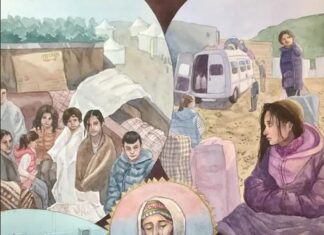YEREVAN (Combined Sources) — Renowned Armenian painter Hakob Hakobian died on March 9 of a heart attack. He was 89.
Born in Egypt, Hakobian repatriated to Soviet Armenia in 1962, where he later earned a “People’s artist” title. “A Woman Frying Fish,” “Spring,” “The Village of Malishka” are among his best-known paintings.
Hakobian was laid to rest on Tuesday, March 12. A government commission headed by Prime Minister Tigran Sargisian was appointed to organize the artist’s funeral.
President Serge Sargisian issued a letter of condolence on the death of Hakobian, who had received the title of People’s Artist of Armenia. “Hakob Hakobian’s death is a major loss for Armenia’s artistic life. As a unique artist and exemplary citizen he arrived in his homeland as a well-known artist with a recognizable style. He came here to reveal a new Armenia and secured a permanent place in the history of his country’s art,” President Sargisian said in his letter, further commiserating with the artist’s family and admirers.
Hakobian was born in Egypt to parents who had fled the Armenian Genocide. He was educated at the Melkonian Educational Institute in Cyprus. He left Egypt for Soviet Armenia in 1962, staying there until his death.
His art is currently part of a new exhibition of Soviet and contemporary art from Central Asia and the Caucasus that opened just four days before his death at the Sotheby’s auction house in London called “At The Crossroads: Contemporary Art From The Caucasus And Central Asia.








